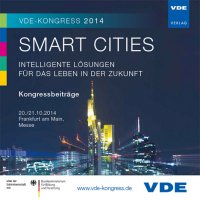Energy Transition in Urban Environments
Conference: VDE-Kongress 2014 - Smart Cities – Intelligente Lösungen für das Leben in der Zukunft
10/20/2014 - 10/21/2014 at Frankfurt am Main, Deutschland
Proceedings: VDE-Kongress 2014
Pages: 4Language: englishTyp: PDF
Personal VDE Members are entitled to a 10% discount on this title
Authors:
Maret, Vincent (Bouygues, e-lab, Paris, France)
Bonnifet, Fabrice (Bouygues, Sustainable Development, Paris, France)
Lhelgen, Eric (EMBIX, CEO, Paris, France)
Schmitt, Laurent (Alstom Grid, Vice President SmartGrid Solutions, Paris, France)
Abstract:
The 100 years from 1950 to 2050 will be remembered for the greatest social, cultural, economic and environmental transformation in history – the urbanisation of humanity. With half of us now occupying urban space, the future of the human species is tied to the city,” Anna Tibaijuka, Under-Secretary-General of the United Nations and Executive Director UN-HABITAT, in remarks at the third session of the World Urban Forum in Vancouver, Canada, in 2006. The urbanisation of humanity is both a fact and a challenge. 3.5 billion people live in cities now, and sixbillion people will live in cities by 2050. Over at least the next 15 years, 95 percent of that growth will occur in developing and transitional countries of the Global South. At the same time the population of other cities will remain nearly constant or even decline. Behind these significant differences there is a common set of challenges, from water sourcing and supply to transport of goods from supporting regions, to energy production and distribution and on to waste handling and resilient infrastructure ready for the consequences of global cli-mate change. All cities need a new plan for facing these problems, and that new plan needs to synergise what are usefully summarised by the United Nations as the ‘Green Agenda’ and ‘Brown Agenda’ for cities.


